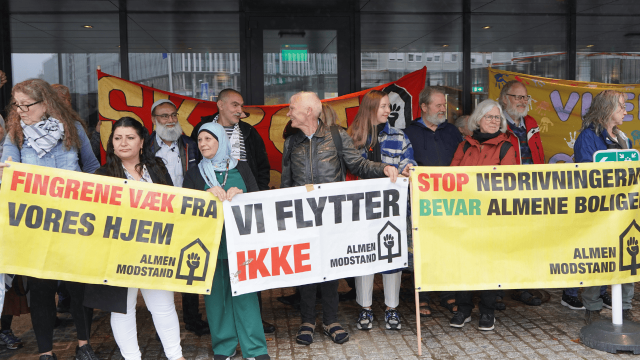Sarah applied for a position in her local government administration. During the job interview, she expressed her desire to wear a headscarf while working. No comments were made about this. She started her job shortly after but was confronted by her supervisor about not respecting the principle of neutrality and the risk of disciplinary sanctions.
What does the law say?
In Belgium, public sector employees have specific rights and duties related to their positions, which must be followed. Among these various duties is the obligation to respect the principle of neutrality, which applies to all public services and their employees, whether they are contractual or statutory.
This duty of neutrality is based on the state’s obligation to be impartial and to guarantee citizens’ freedom and equality before public services. Consequently, the administrative authority cannot discriminate in the treatment of users, particularly due to the personal beliefs of its employees, who must not only act neutrally but also maintain a neutral appearance when facing users.
This principle is not explicitly defined by Belgian law but emanates from both the joint reading of various articles of the Belgian Constitution, such as Articles 10 and 11 guaranteeing equality between citizens, Article 21 prohibiting the state from interfering in the appointment of ministers of worship, or Article 24 which establishes neutral education, and fundamental principles of Belgian administrative law, in which the duty of neutrality of the agent is included.
This obligation of neutrality leads to a limitation of certain fundamental rights and freedoms of employees, particularly religious freedom. Indeed, wearing external signs of philosophical, political, or religious beliefs may be perceived as a breach of the duty of neutrality.
Case law considers that the duty of neutrality constitutes a sufficient reason to prohibit the wearing of conviction-based signs in the context of public officials’ duties. A restrictive measure is deemed appropriate if it effectively contributes to ensuring this objective of neutrality. As in the private sector (see practical guide), the public sector must respect the conditions set by law and jurisprudence to justify a restriction on wearing religious, political, or philosophical signs. These conditions are as follows:
- A legitimate aim: The restriction must pursue an objective recognized as valid, such as preserving state neutrality.
- Consistent and non-discriminatory application: This policy must be applied uniformly, without distinction related to the religious, political, or philosophical convictions of employees.
- Proven necessity: The restriction must be indispensable to achieve the intended objective and must not exceed what is strictly necessary.
It should be noted that not all administrations have the same applicability of the duty of neutrality. Some have oriented themselves towards:
- An exclusive neutrality, which applies absolutely to all civil servants and notably imposes the prohibition of all conviction-based signs,
- Or an inclusive neutrality which, in turn, does not concern conviction-based signs but only the services provided by civil servants. Thus, wearing conviction-based signs is allowed.
This distinction results notably from the CJEU judgment of November 28, 2023 (Commune d’Ans) where the High Court admitted that Member States and their administrations ultimately have a margin of appreciation regarding the appropriateness of a policy excluding conviction-based signs, according to their specific context, which must however go hand in hand with a review that is incumbent upon state courts regarding the principle and proportionality of such a measure.
There is therefore, within Belgian public services, a distinct applicability of the principle of neutrality. This can be explained for various reasons: The administration’s sensitivity to inclusivity issues and diversity policy, the social context in which the administration operates, whether the civil servant is in constant contact with users or not, or the particular mission that the administration is supposed to accomplish and which could justify the implementation or not of an exclusive neutrality policy.
In conclusion, respect for the principle of neutrality is the basic rule within public service, and this obligation of neutrality frequently leads to a ban on wearing religious symbols. This prohibition must nevertheless be explicitly provided for in the internal regulations of the administration and meet certain conditions. Moreover, there are specific practices that can range from the total exclusion of religious symbols to the admission of religious headwear.
What should I do?
- Request the communication of the administration’s internal regulations to verify the existence of a clause prohibiting religious symbols.
- Check if such a clause applies without distinction of beliefs to all employees and if it effectively pursues the requirement of neutrality.
- Require a written request to remove a religious symbol and the reasons for such a request.
- Communicate to the employer/hierarchical superior the current legislation as well as relevant court decisions.
- Refer the matter to the union delegation, the Committee for Prevention and Protection at Work (CPPT) or any other workers’ representative in your structure in case of disputes.
- Ask a member of the union delegation to give an explicit reasoned opinion on the compliance of this neutrality clause.
- In the absence of a neutrality clause or an irregular clause, contact UNIA to report discrimination.
- Contact the legal service of Equitas who will accompany you at each step.
APPLICABLE REFERENCES
- Article 9 of the European Convention on Human Rights.
- Article 16 of the Charter of Fundamental Rights of the European Union.
- Article 18 of the International Covenant on Civil and Political Rights.
- Articles 10, 11, 21 and 24 of the Belgian Constitution.
- Law of May 10, 2007 to combat certain forms of discrimination.
- CJEU March 14, 2017: Asma Bougnaoui and Association de défense des droits de l’homme (ADDH) v Micropole SA.
- CJEU March 14, 2017: Achbita v G4S Secure Solutions.
- CJEU 15 July 2021, IX and MJ v Wabe and MH Müller Handels GmbH.
- CJEU, 28 Nov. 2023, OP v Commune d’Ans
- Brussels Labour Court, 14 February 2024, 2023/AB/24
- United Nations Convention on the Elimination of All Forms of Discrimination against Women.
- ILO Convention No. 111 concerning Discrimination (Employment and Occupation).
- Council Directive 2000/78/EC of November 27, 2000 establishing a general framework for equal treatment in employment and occupation.
- Directive 2006/54/EC of the European Parliament and of the Council of 5 July 2006 on the implementation of the principle of equal opportunities and equal treatment of men and women in matters of employment and occupation (Recast Directive).



